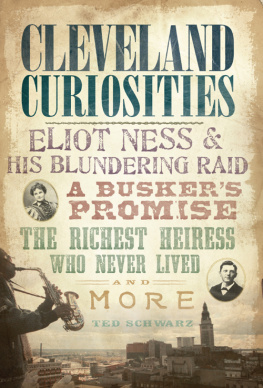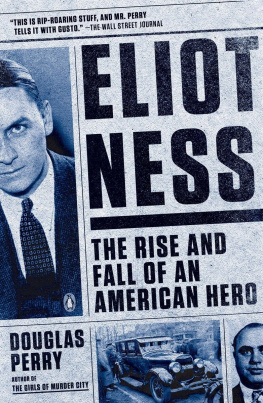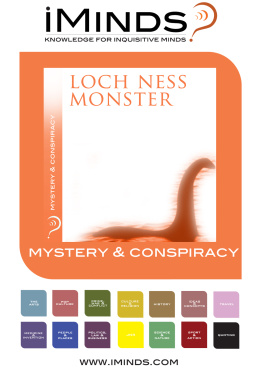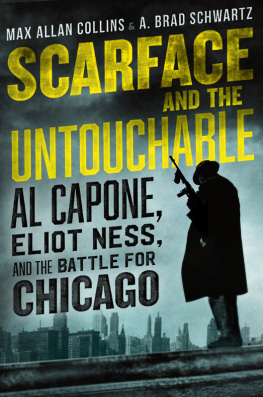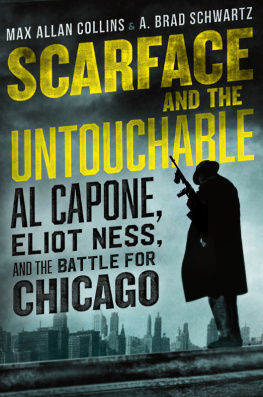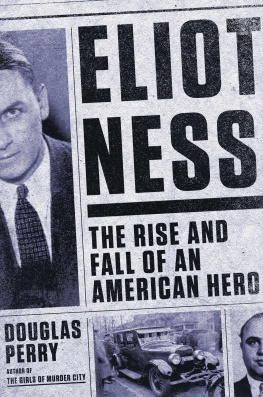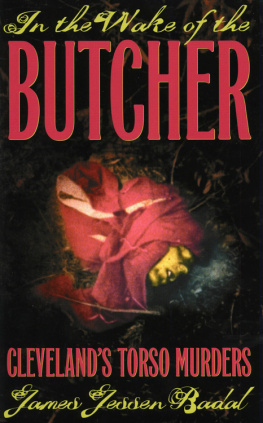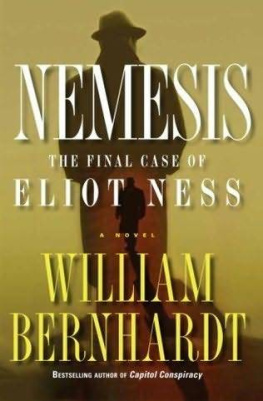TORSO

Copyright 1989 by Steven Nickel
Printed in the United States of America
All rights reserved
Library of Congress Cataloging-in-Publication Data
Nickel, Steven.
Torso : the story of Eliot Ness and the search for a psychopathic killer / Steven Nickel.
p. cm.
Bibliography: p.
Includes index.
ISBN 0-89587-246-3 (pbk.)
1. Serial murdersOhioClevelandCase studies.
2. Homocide investigationOhioClevelandCase studies. 3. Ness, Eliot. 4. DetectivesUnited StatesBiography. 5. PoliceUnited StatesBiography. I. Title.
HV6534.C55N53 1989
364.15239077132dc19
89-792
CIP
I am indebted to the following for their assistance and cooperation: the staffs of the Cleveland and Chicago public libraries; Claire Fenrich at the Cleveland Plain Dealer; Ann Sindelar and Michael McCormick at the Western Reserve Historical Society; Dr. Elizabeth K. Balraj at the Cuyahoga County Morgue; David Yawn; Bryon Sellers; and especially my wife, Karen, for her help, encouragement, and patience while I was preparing the manuscript.
TORSO
T his is a story about crime in Cleveland, Ohio, from the fall of 1935 to the spring of 1942.
During this perioda time marked by rampant lawlessness at its beginning and a dramatic decrease in crime by its endheadlines in the city were dominated by two widely divergent individuals. One was an energetic young lawman whose colorful exploits propelled him into the public limelight and restored a sense of hope and pride to a beleaguered community. His name was Eliot Ness. The other was a mysterious, phantomlike killer, never caught, never identified, whose horrible crimes plunged the city into a state of terror. Newspapers called him the Mad Butcher, the Head-hunter, and the Torso Murderer.
Like most big cities, Cleveland is marked by strong contrasts. The natural beauty of the region is muted by rampant industrialization; majestic skyscrapers overlook festering slums; and the affluent walk the same streets as the needy. Even opinions about the city vary dramatically, some hailing Cleveland as the best location in the nation while others mock it as the mistake by the lake. It is appropriate, then, that at a crucial time in the citys history, one of the two central figures in this story came to represent what was good and decent in Cleveland, while the other came to symbolize what was reprehensible and wicked.
The Torso case might be regarded as the missing chapter in the saga of Eliot Ness. Thanks to The Untouchablesbook, television series, and motion pictureNess has become one of the most celebrated figures among twentieth-century American lawmen. In the process, fact has been largely eclipsed by fiction. Readers will find a demythicized Eliot Ness in the following pages, a man who helped create his own larger-than-life image and then struggled to live up to it.
By contrast, the Torso Murderer remains curiously unrecognized in the annals of crime. In many ways, the case qualifies as an American version of Londons infamous Ripper murders. In each instance, a knife-wielding maniac operated alone and unseen in the heart of a huge city, preying upon the lowest stratum of society, the series of grisly killings suddenly ending and the unknown slayer vanishing into oblivion.
London authorities were absolutely baffled by the Ripper murders and endured tremendous criticism as a result. Sir Charles Warren, head of the metropolitan police, became the prime target of the publics furor and eventually resigned. In Cleveland, when the embarrassed and exasperated police force continually failed to catch the Torso Murderer, the city looked in desperation to Eliot Ness. When he, too, failed, the critics descended like wolves on Ness and his exalted image.
The failure of police to capture either Jack the Ripper or the Torso Murderer was no doubt due, in large part, to the fact that they were dealing with what was then a rare phenomenon. The Ripper was historys first pattern killer and sexual psychopath. Victorian law enforcement officials quite honestly didnt know what to make of him. In like manner, though he appeared on the scene a full fifty years later, the Torso Murderer was, with a few arguable exceptions, Americas first serial killer. He was also one of the most prolific if certain evidence is considered. The official body count in Cleveland reached twelve, but at least one of the detectives closest to the case maintained that a number of similar killings outside the city were the work of the same man.
As with the Ripper murders, the mystery surrounding the Torso case has only deepened with the passage of time. Despite the abundant evidence and the parade of suspects (including one Eliot Ness did not speak of until twenty years later), the identity of the Torso Murderer and his method of eluding capture in what was one of the most massive homicide investigations in history remain impenetrable after half a century.
Clevelanders got their first look at Eliot Ness in August of 1934. For some, especially those who had followed the accounts of the governments battle against organized crime, his reputation preceded him. In Chicago, as a young agent of the Justice Department, Ness had led a special squad of gangbusters known as the Untouchables that helped to smash the bootlegging empire of Al Capone. In the course of his two-and-a-half-year crusade against the underworld figures of the Windy City, Ness had won fame as a resourceful, courageous, and incorruptible crime fighter.
Cleveland had a desperate need for a lawman with the talent and integrity of Eliot Ness. Americas seventh largest city (with a population of just under a million), Cleveland was infested with so much crime and corruption that it had earned a reputation as an untamed town. The public had long ago lost faith in its police and city officials and was starved for a hero.
Ness, however, was not coming to town to combat the gargantuan problem of metropolitan crime. He was still the property of the federal government, and his arrival was rather routine as he settled into his new post as investigator in charge of the Treasury Departments Alcoholic Tax Unit in the northern district of Ohio.
There were still a curious few, most of them reporters, who turned out to get a look at the already legendary G-man as he arrived at his new office in the Standard Building in downtown Cleveland. The majority, no doubt expecting to see a rugged-looking lawman, were genuinely surprised to find a well-dressed, handsome young man with a pleasant smile and a soft voice. Eliot Ness was just thirty-one, and he looked even younger. Standing six feet and weighing 180 pounds, he possessed what some would term a baby face, round and cherubic with a ruddy complexion in the cheeks, a weak, dimpled chin, wavy brown hair parted in the middle, sleepy blue-gray eyes, and a sharp nose crossed by a faint band of freckles. His slender build and slim waist were offset by broad, powerful shoulders.
He looked like a youthful business executive and possessed a confident yet modest manner, blushing slightly as he answered questions. Ness downplayed his role in the Capone case. Although he and his Untouchables had performed some spectacular feats in busting up mob distilleries and breweries, he credited revenue agents for collecting the actual evidence that had put the scar-faced ganglord behind bars. He appeared more enthusiastic about his present assignment, announcing that his goal was to clean out bootleggers from the region. When the newsmen pressed for more details, Ness replied, Im just finding my way around Cleveland. Id rather talk about what we can do after we do it.
Ness wasted no time fitting into his new role and making an impact on the city. With thirty-four agents under his command, he methodically tracked down, raided, and destroyed a string of illicit alcohol operations throughout Cuyahoga and Lake counties. Nesss new squad earned a reputation for hitting a still a day. They arrested hundreds. In one of their most sensational raids, they captured what was believed to be the largest distillery in northeastern Ohio, operating behind a legitimate business on East Thirtieth Street. Ness and his agents seized and demolished over a hundred thousand dollars worth of equipment capable of producing a thousand gallons of bootleg liquor a day, cheating the government out of close to thirty thousand dollars a week in taxes.
Next page


